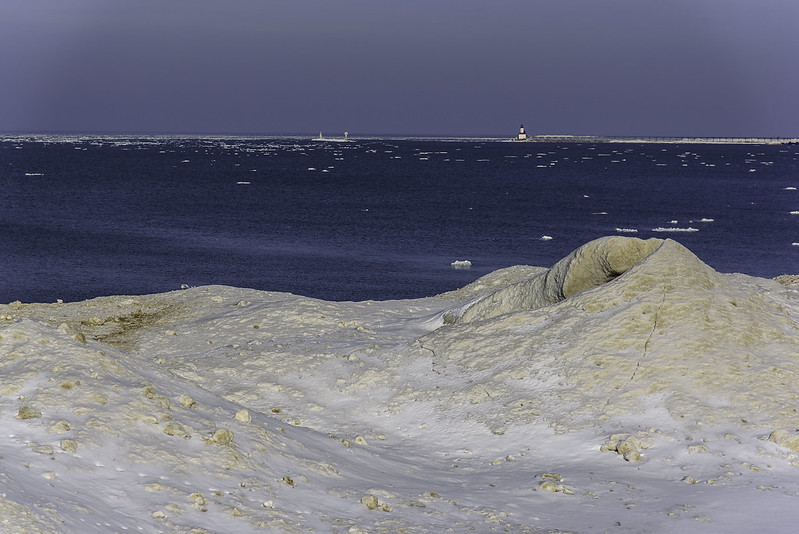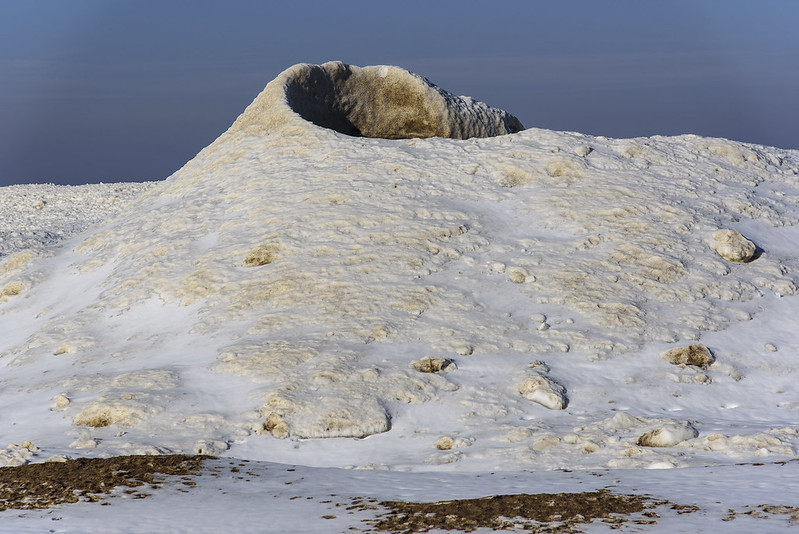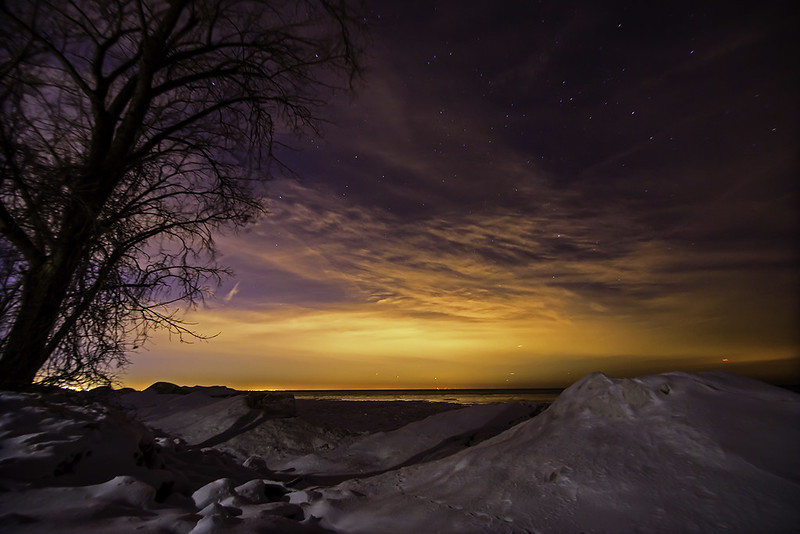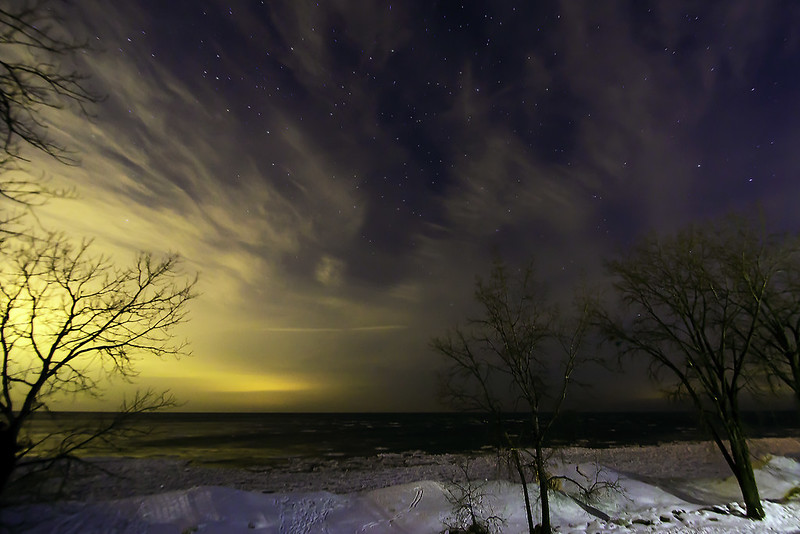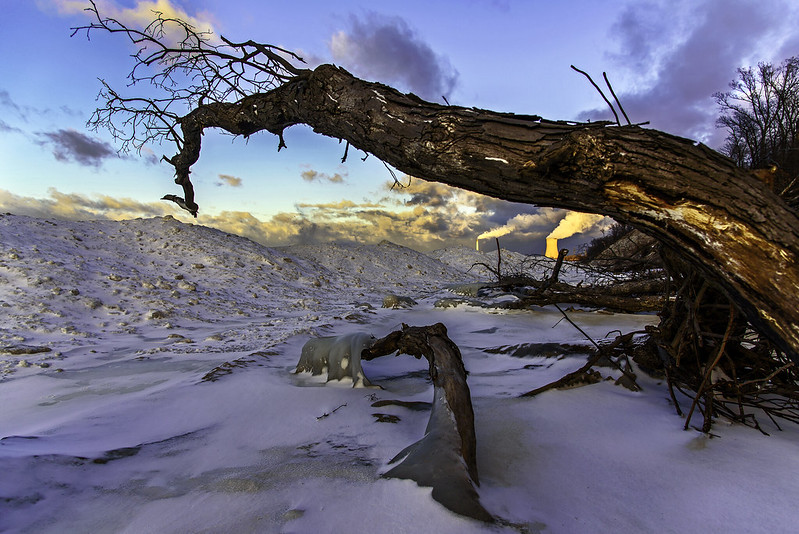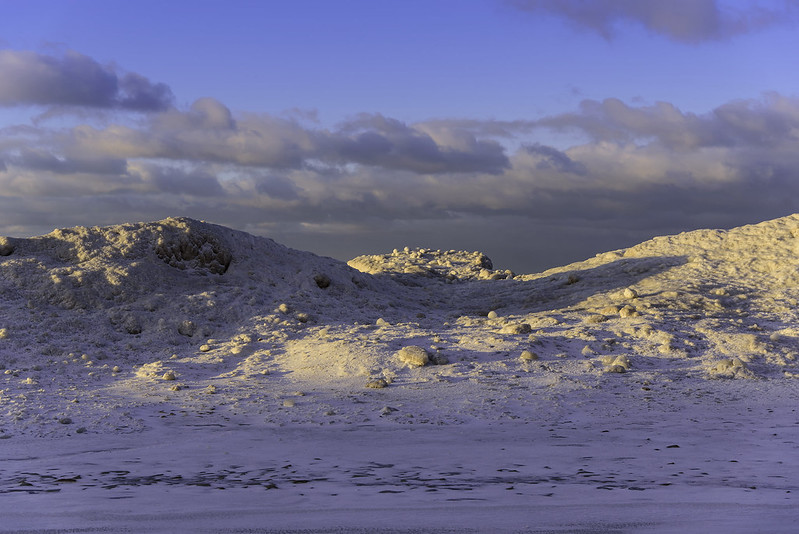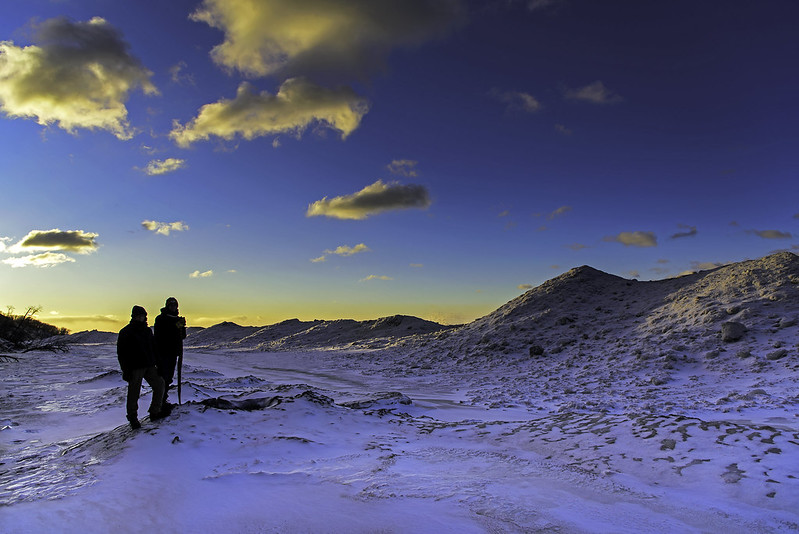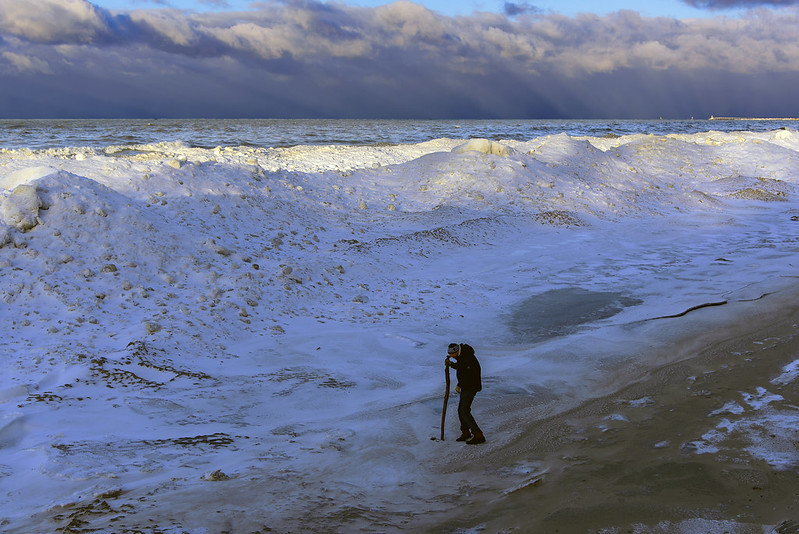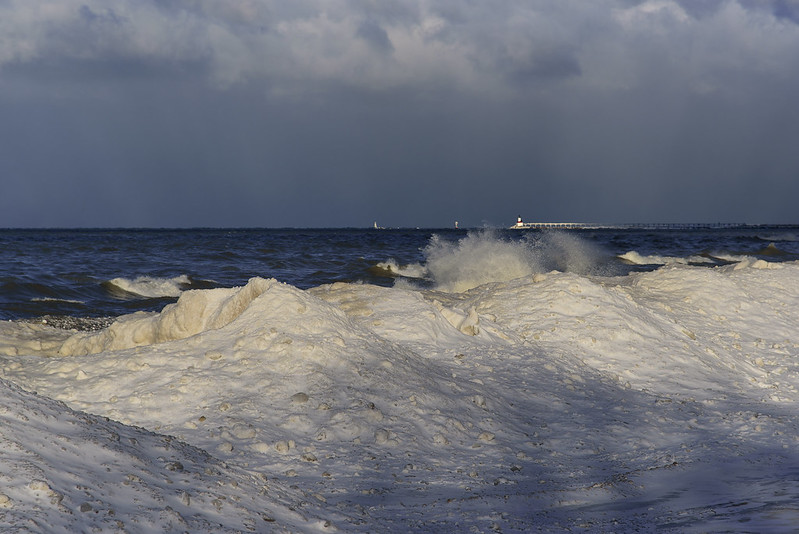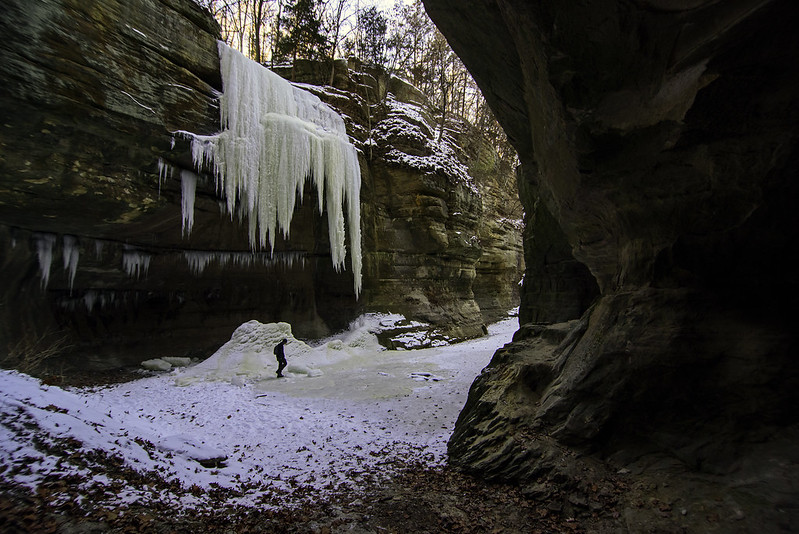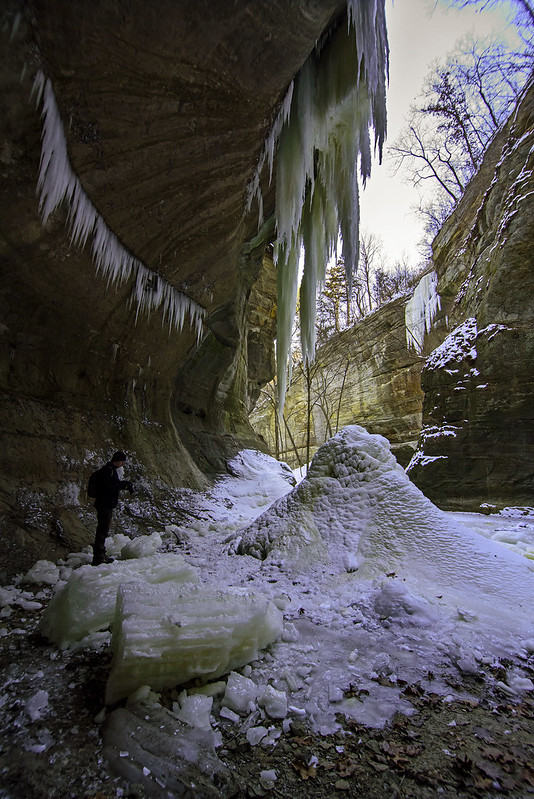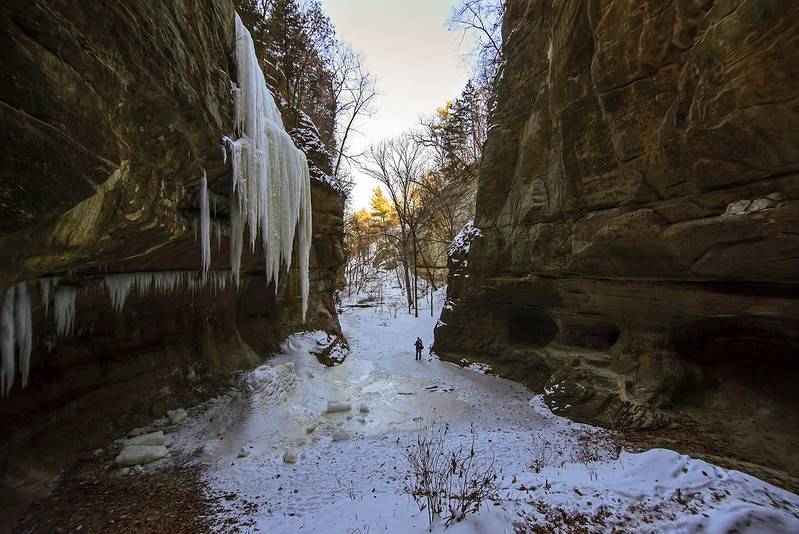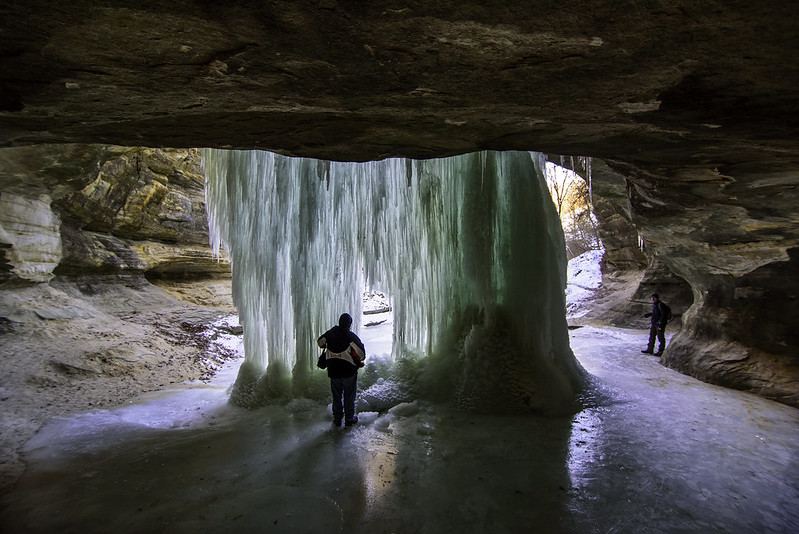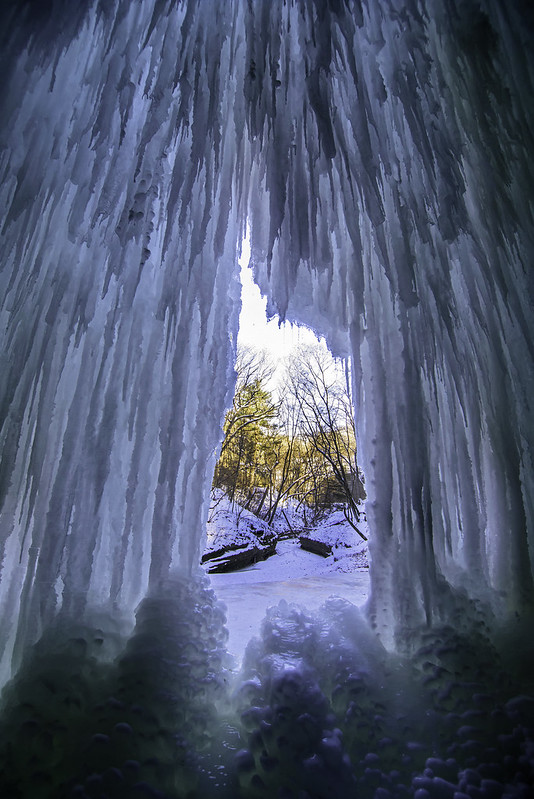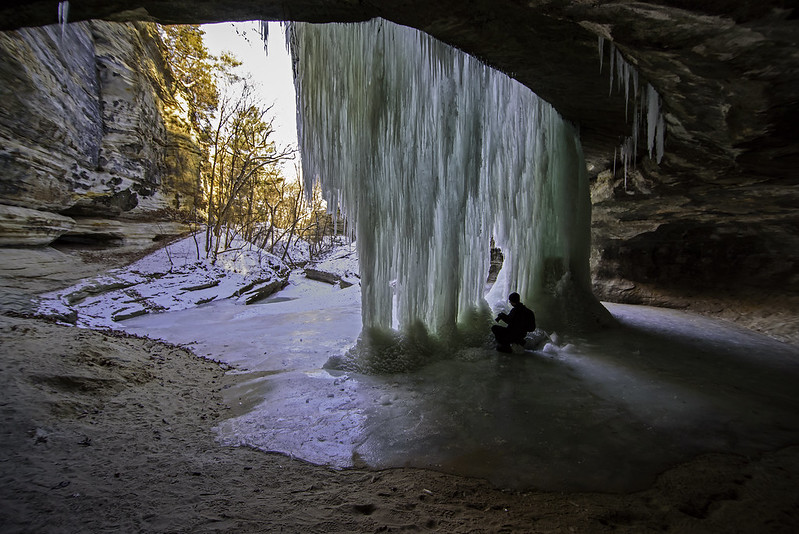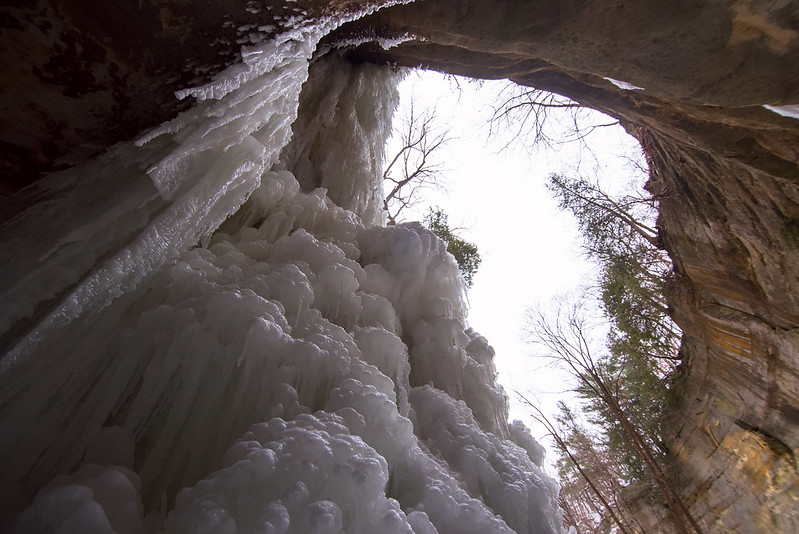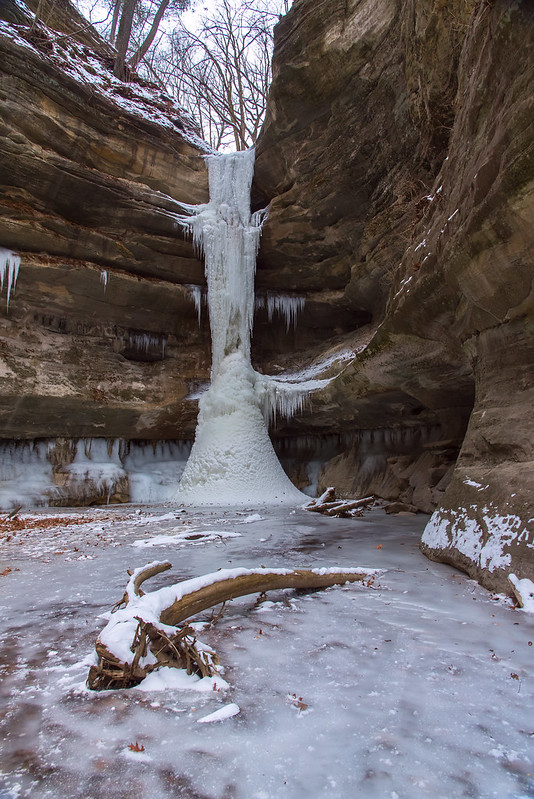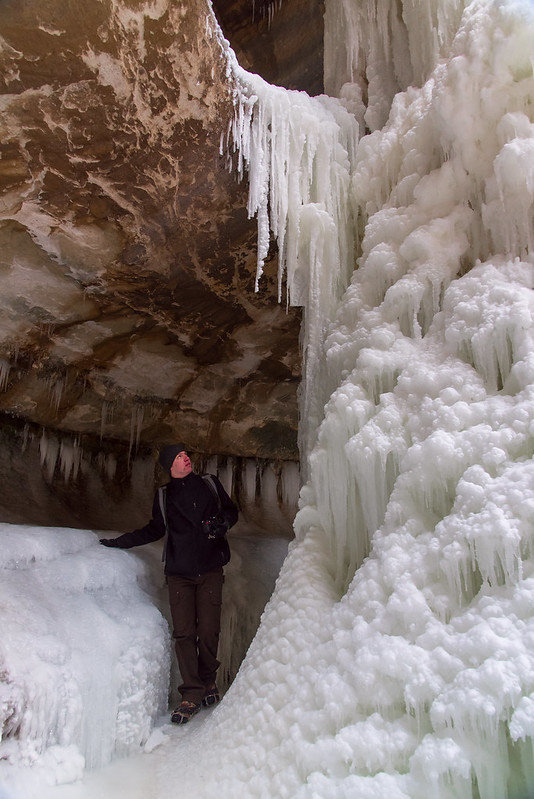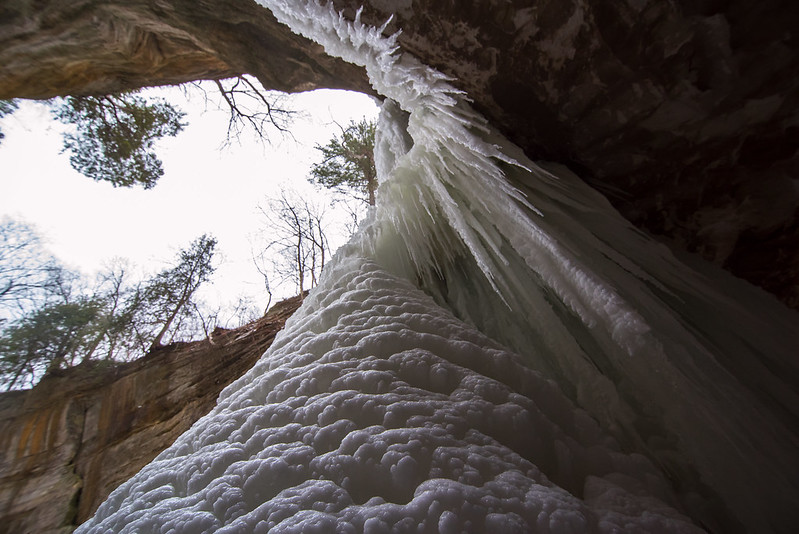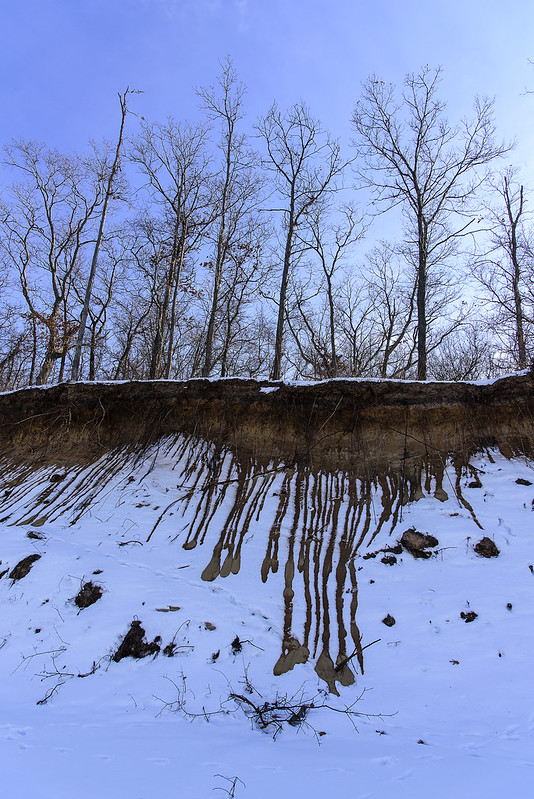
Our hike on the beach of Mt. Baldy in the Indiana Dunes National Lakeshore introduced us to an interesting thing. The snow that fell earlier in the morning was moved by dripping sand. Something that happens everyday along the dunes, small amounts of sand loses its grip and slides down the steep sides of the dunes. Normally, the sand either goes unnoticed, or forms a slight line in the sand as it falls down the dune.
The sand kept falling, but as it did, it moved the fresh snow along with it, acting like tiny plows as it moved on toward the beach.
These lines echo the lines of the branches of the bare trees just above, growing on the dune and enduring yet another harsh winter on the shore of Lake Michigan.
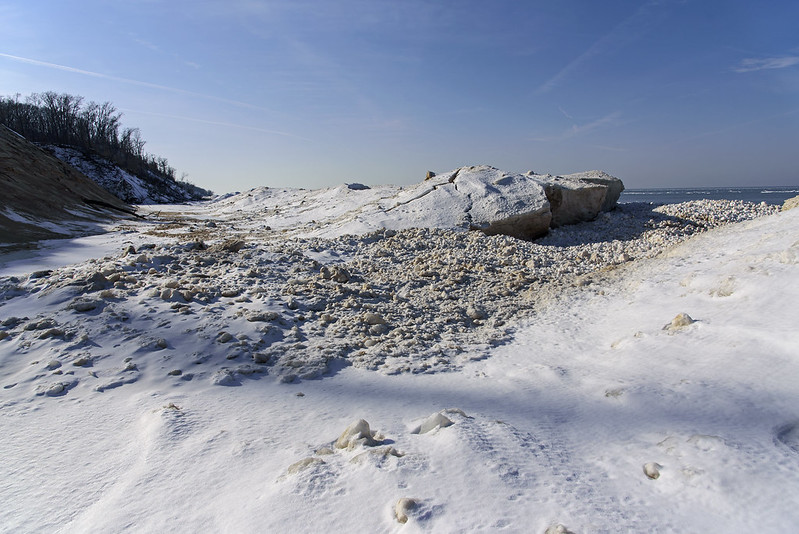
These dunes are relatively protected in winter, by mounds of shelf ice. The high waves can't reach the dunes if they're blocked by this ice. But as the temperature fluctuates, the ice weakens, and the waves increase, causing some of the ice mounds to crumble, making possible for the waves to reach beyond the shelf ice.
Ever changing, these mounds may collapse further if the warm weather continues, or, they may build stronger if the temperatures drop. We'll see on our next visit.

